- | 5:00 pm
Ex-Nike designer builds a boot that could prevent 80,000 amputations a year
When a career podiatrist teamed up with a former designer from Nike, they created a fashionable medical product that’s clinically proven to save more limbs from diabetic ulcers.
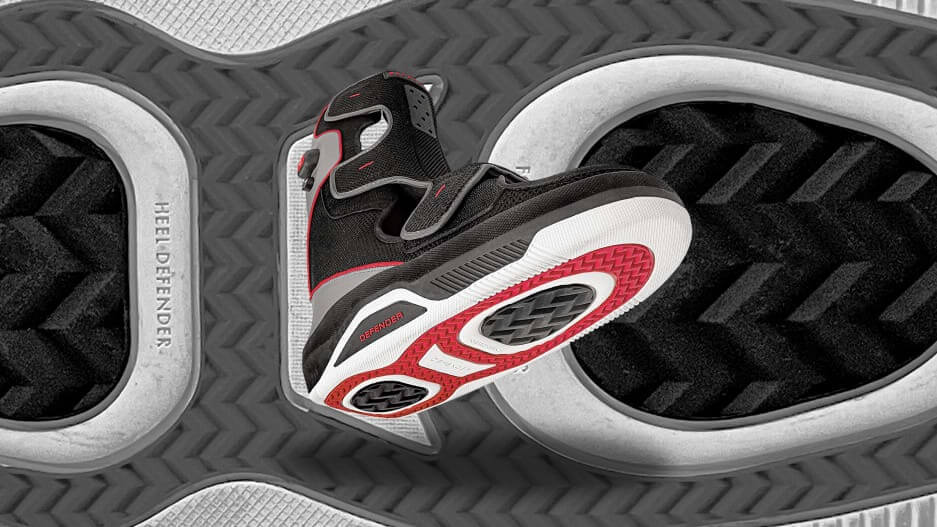
Our own government calls it an “epidemic of amputations.” Of 200,000 people in the U.S. who have amputations each year, 130,000 are specifically from complications with diabetes. Ulcers will form on the bottom of people’s feet where, under the weight of their own bodies, these wounds refuse to heal. Amputation comes next, after which point a person with diabetes has the same five-year mortality rate as someone with cancer.
Following decades in the industry, podiatrist Jason Hanft was disgusted by his inability to help his patients more. And after auditing what was going wrong at his own practice, he teamed up with former Nike designer Michael DiTullo to do something about it.
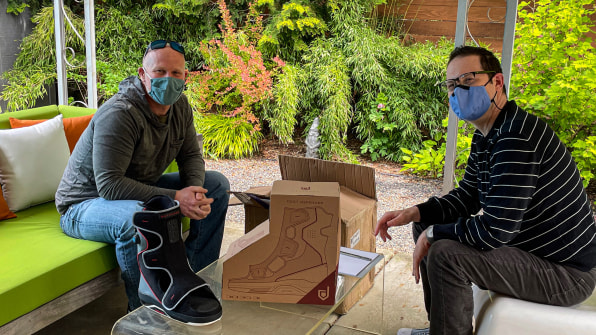
[Photo: Foot Defender]
The product they developed over four years is called Foot Defender. It’s a $250 medical boot that looks, purposefully, like a Jordan high-top. Instead of complicated laces, the entire front of the boot Velcros off, so it’s easy to slip a foot inside. Once on, it redistributes weight off of the ball of the foot, where 83% of diabetic wounds happen, across the arch and leg so that 80% of patients healed in an average of five and a half weeks, in a clinical study. By comparison, only 21% of diabetic wounds heal by 12 weeks normally. As a result, Hanft believes that his product could save up to 80,000 limbs each year in the U.S. alone.
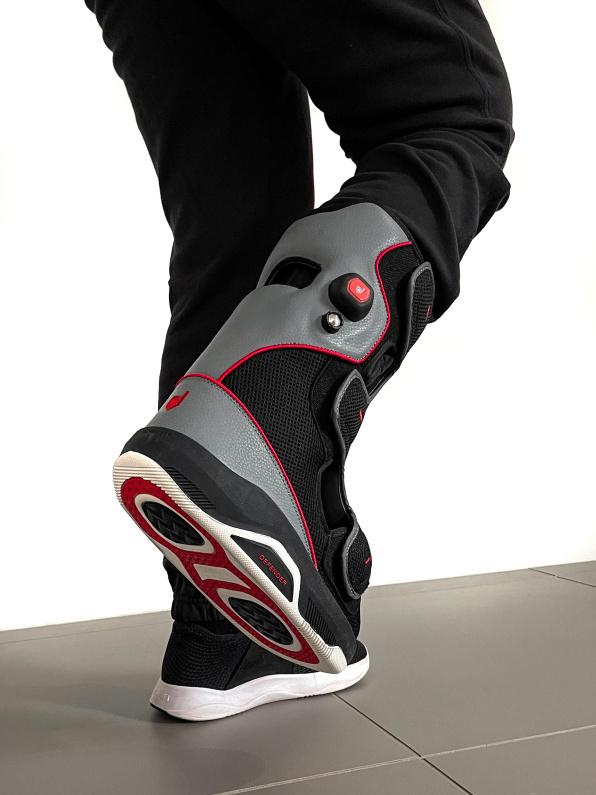
[Photo: Foot Defender]
The reason that Hanft understands the problem so well is that he’s actively studied it. In 2018, he pulled together a 20-year retrospective of his clinic’s patient data to see whether the latest techniques in wound care had lowered their diabetic amputation rate. As it turned out, the amputation rate at his practice hadn’t gotten lower; it had actually gotten higher, just as it has for patients across the U.S. When he enlisted a statistics and analytics company to figure out what was going wrong, the company claimed that his own patients had stopped taking his advice in how they cared for wounds: They said they’d grown noncompliant.
“That didn’t make any sense,” Hanft says. “Patients in 1998 were no more compliant than in 2018.”
At that point, Hanft began his own research, interviewing 5,000 patients alongside clinicians. His team asked patients why they thought they weren’t having more success with their wounds, and most of them said that the medical boots they were given—which had incidentally been designed only for ankle sprains and other unrelated issues—were hard to get on, hard to walk in, and made them self-conscious because they looked like medical devices.
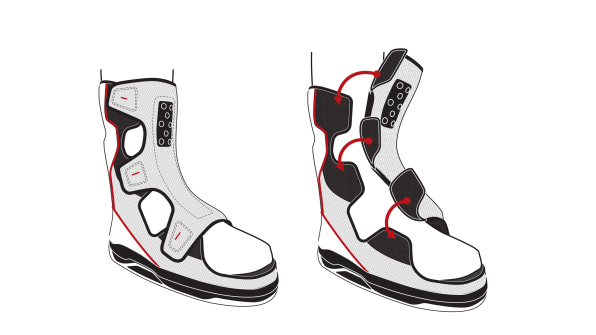
[Photo: Foot Defender]
“That was my light bulb moment. We’re asking morbidly obese people, for the most part, to reach down to the bottom of their foot to put devices on,” Hanft says. “And they can’t reach down to the bottom of their foot.”A better-looking, easier-to-don boot would solve a lot of those problems. But if Hanft could build a boot that could also, somewhat paradoxically, remove pressure from the foot at the same time, he knew he’d have a breakthrough product.
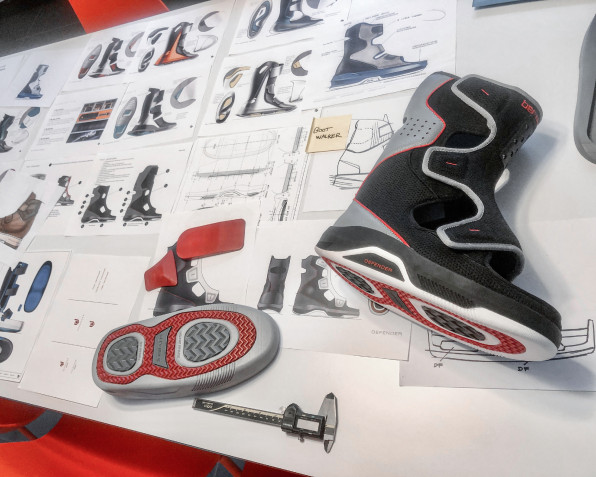
[Photo: Foot Defender]
After raising an undisclosed amount of capital, Hanft enlisted DiTullo, a former designer on Jordan, Converse, and Nike, who helped bring the vision to fruition. DiTullo’s first concern was how to solve the function of the boot itself to relieve foot pressure, and he found a big part of the solution in standard shoe design.
Your typical sneaker pushes you to the balls of your feet, where you are balanced and ready to sprint. In a shoe like the classic Air Max 270, it’s a full 10 millimeter offset that tilts your foot in this direction. Of course, what works for sports is terrible for diabetic wounds.
So DiTullo added a heel drop into the shoe to tilt someone back toward their heels. It’s a slight drop, just 2 millimeters, but keep in mind that’s a 12 millimeter difference from a sneaker, “which doesn’t sound like a lot but makes a difference,” DiTullo says.
And while many medical boots, and even Timberlands, have a rocker—a rounded heel to improve the wearer’s gait—that approach couldn’t work for the Foot Defender. Why? Because when someone walks with only one rocker, they shift more pressure to the opposite foot, causing it to develop an ulcer.

[Photo: Foot Defender]
To support your leg and heel, a large injection molded shell lives inside the shoe, much like a ski boot. “It’s locked through the ankle so you can’t lean forward,” DiTullo says. “Then in the front [tongue] there’s molded carbon fiber, so you can’t get your knees over your toes.”For the cushy midsole that your foot sits on, DiTullo used typical sneaker EVA foam, but added a layer of gelatinous material that’s more resilient.
“Thinking of someone who is often over 250 or 300 pounds, there’s a lot of pressure coming down,” DiTullo says. “We want to make sure there’s more suspension travel, so they never experience bottoming out.”
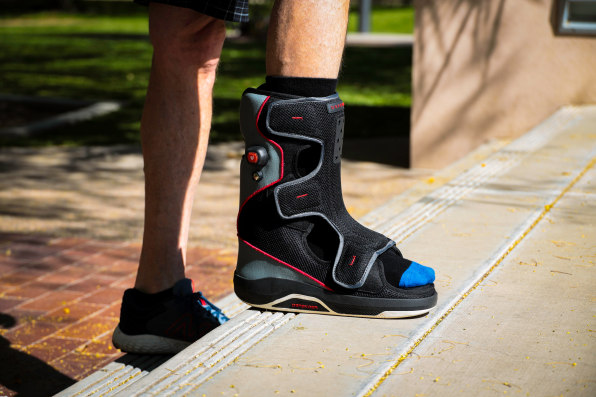
[Photo: Foot Defender]
A MEDICAL BOOT THAT LOOKS READY FOR THE COURT
Of course, all of these improvements were designed to remove pressure from a wound, but they didn’t address the most immediate issue: to get a patient to wear their boot in the first place.
Originally, DiTullo had designed the Foot Defender as a cool but also typical medical device, to be injection molded at medical factories, with hard plastic parts on the outer shell. Making small tweaks to this design was prohibitively expensive, and it still felt too clinical.
“A year in I said, ‘I think we’re doing this wrong,’” DiTullo recalls. “We need to stop trying to teach a medical factory to make a consumer-grade good, and go to a shoe factory that knows the fit and finish we need and teach it how to build with the precision we need.”

[Photo: Foot Defender]
With that new approach, the injection-molded hard parts went inside the shoe, while a soft outer layer could hide them away and appear as a more typical high-top. He added the flat cup sole of a skater shoe to keep a patient’s foot flat, but remixed it with an oversize herringbone pattern on the bottom for traction—the same approach taken in basketball shoes.Each component is a functional design cue, signaling to your brain that this is a piece of athletic equipment rather than a medical product.
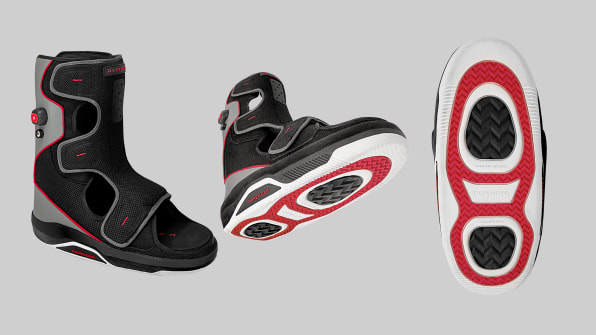
[Photo: Foot Defender]
When considering how someone might step into the shoe, DiTullo remembered some basketball shoes at Nike that had used a bit of Velcro as opposed to laces. And he figured that what worked for LeBron would work for others. So he designed the entire front of the boot to peel off, let you stick your foot in, and then attach back on with Velcro.

[Photo: Foot Defender]
The final component DiTullo added to the Foot Defender is another sneaker throwback: a pump much like those found on a 1980s-era Reebok. Pushing on the pump up near the ankle inflates a bladder inside the shoe to lock your heel so it can’t slide up or down—improving the fit and feel of an otherwise hard shoe.
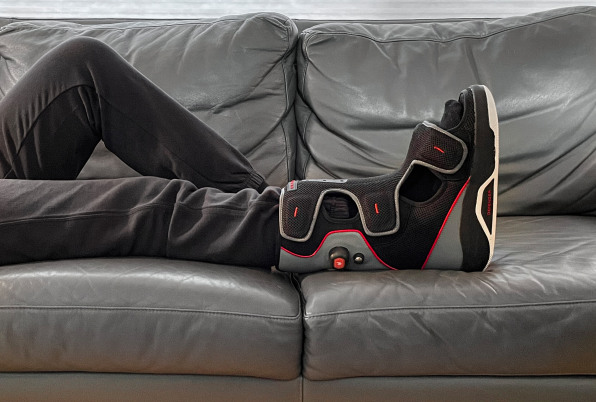
[Photo: Foot Defender]
According to the company’s own research, all of these components make a shoe that reduces the force on the bottom of the wearer’s foot up to 80% more than other products on the market. While the company hopes to validate the product further through a larger, peer-reviewed study next year, the Foot Defender won an award from the Symposium on Advanced Wound Care where it was presented earlier this year. Foot Defender technically requires no additional certifications, as it’s a class 1 medical device, so it’s on the market now.Hanft is planning several more releases for Foot Defender in hopes of not just treating foot ulcers but also preventing their high rate of recurrence, noting, “We have a whole quiver of products to manage diabetic wounds.”





































